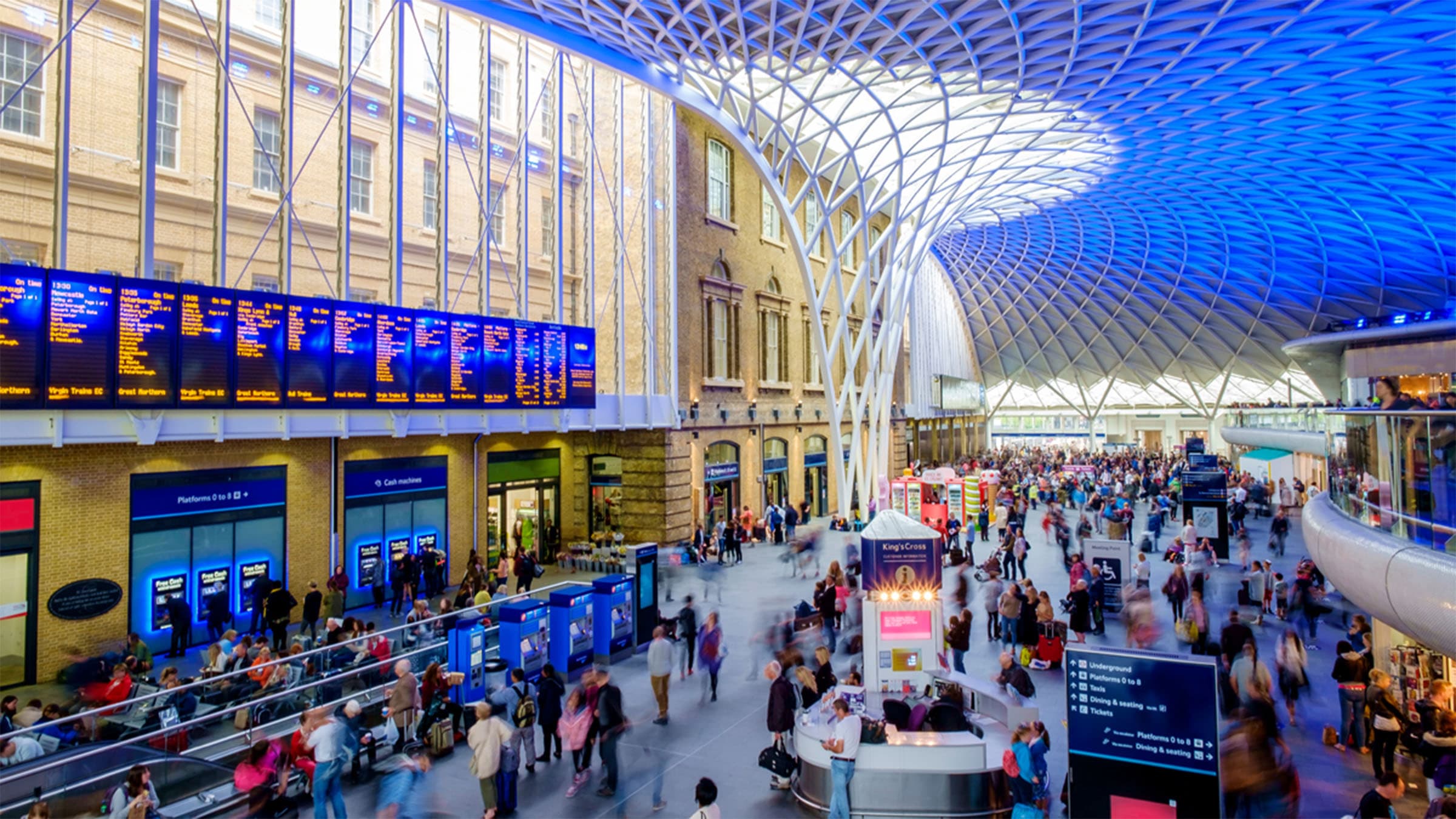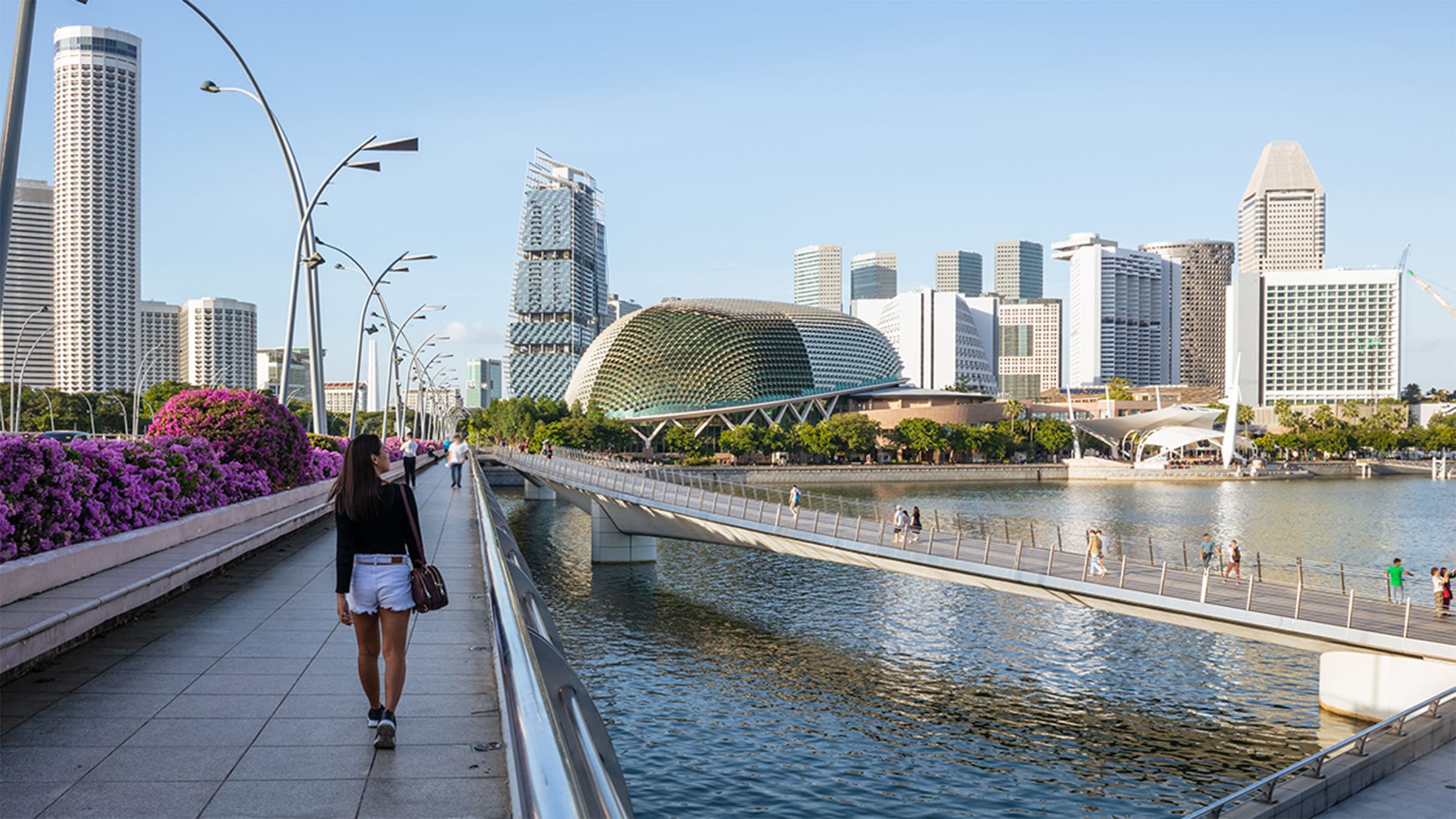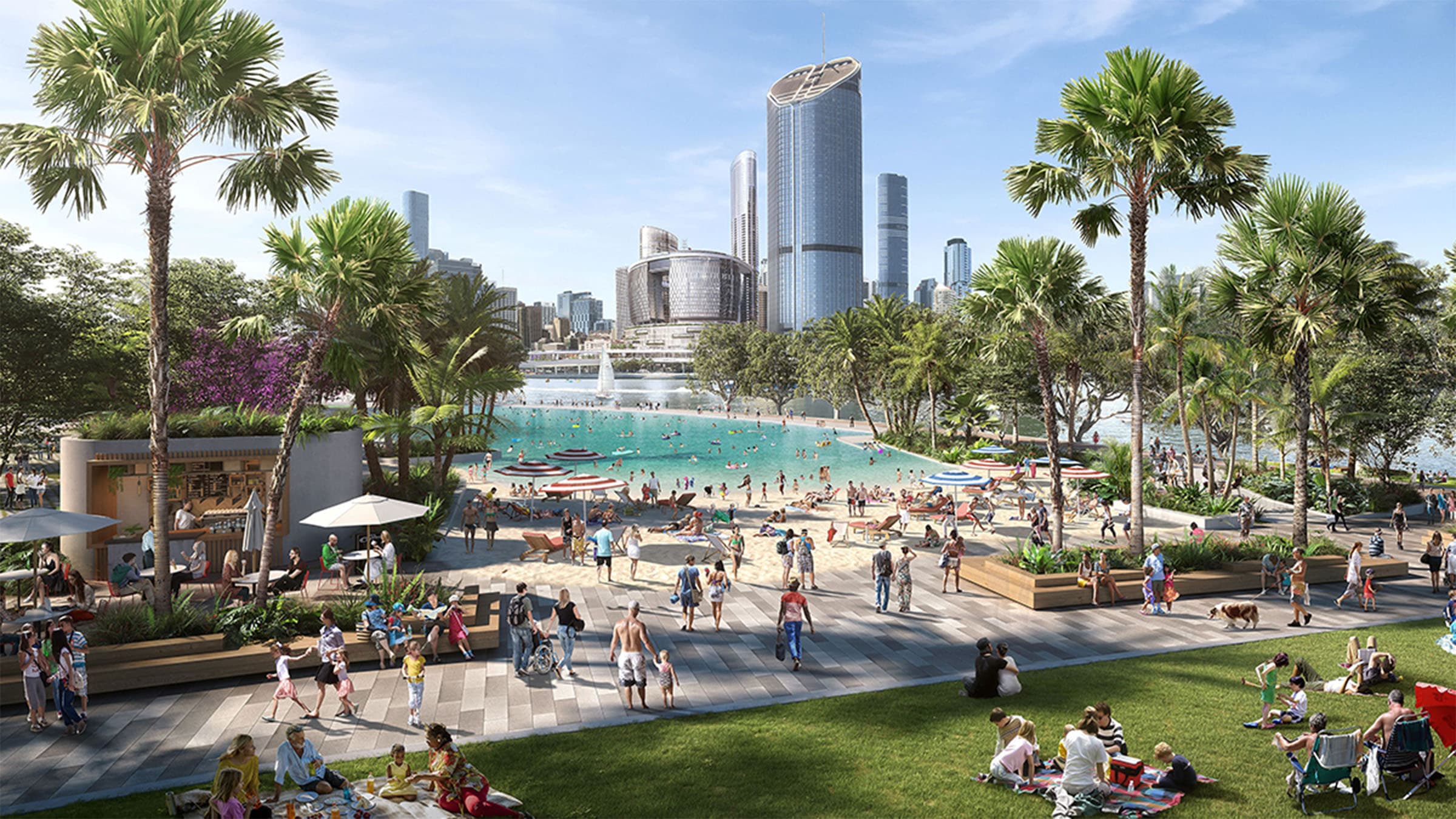From Ancient Egypt to Brisbane 2032: six components of precincts

Precincts are an enduring source of competitive advantage for cities and a powerful force in enhancing livelihoods and lifestyles. Bigger than a site but smaller than a suburb, precincts present the optimal scale of development at which to tackle urban challenges, transform urban spaces, and advance progress against the United Nations’ Sustainable Development Goals.
The rapid growth of cities across Australia and South-East Asia has elevated the significance of precincts in policy and practice - reflecting their real potential to address urgent urban challenges, build new forms of economic advantage, support sustainable growth, and drive more inclusive renewal or regeneration
There is no singular definition of a precinct, and they are not a homogeneous concept. But we can understand a precinct as ‘a spatially bounded area of a city consciously shaped through policy, vision, governance and planned investment to cluster activities and experiences with a shared purpose’. It represents a deliberate urban intervention and a unit of strategy for a city – allowing governments and the private sector to collaborate to create new forms of competitive advantage.
“Precincts are found anywhere across a city - from the regeneration of former industrial lands in the city centre and fringe, to the development of strategic greenfield sites. Finance, innovation, cultural, event, transit-oriented, logistics, industrial, and mixed-use represent just some of the different types of precincts that can accelerate or sustain urban success,”
Six factors are critical to the success of a precinct
Urbis research has explored sixty-one precincts in seventeen cities globally, in a quest to identify whether a series of features or characteristics can be identified as critical to accelerating or amplifying success – irrespective of the type of precinct or its location.
Critically, the research found that social and commercial success flows when a precinct is place-based and leverages its intrinsic qualities as differentiators - because while generic solutions are easier to build, they are harder to love. They outperform expectation over time when they are rooted in local policy and culture; and are designed to reveal the soul of the city and the values of its community.
We can distil our observations into six fundamentals which transcend not only geography, context and community culture, but also time. Their application has been empirically proven to drive powerful and enduring precinct performance that delivers inter-generational value for their city and community.
1. Act with intentionality
A clear purpose and a compelling vision of success is fundamental to leveraging the transformative potential of precincts. The vision drives collaboration and guides decision-making over the precinct-lifecycle. The potential for a precinct to act as an agent for change is amplified when the community has contributed to actively shaping the precinct and see their contributions reflected in the outcomes.
King’s Cross Railyards provides the contemporary textbook and storybook for the benefits that can be realised for a city through successful precinct-scale development. It set out to create a distinctive purpose and identity, re-energising a former industrial area between the City of London and its West End. Leveraging significant transit investment, it has transcended its movement function to create a dynamic cultural and economic destination with a significant halo effect that has reinvented London’s mid-town.
Another example – Milan’s Porta Nuova precinct - unified three fragmented neighbourhoods in the inner-city, increasing coherence, introducing more urban green, and delivering a bold new destination that advanced the image of Milan as a contemporary city of design.

2. Amplify through alignment
Precincts are intersectional: their performance is tied to that of its host city. Astutely positioned, it can amplify the leverage derived from other investments – such as transit, and act as a policy vehicle for the realisation of wider spatial, economic or social objectives.
Marina Bay provides a compelling example of harnessing the precinct drivers to the national aspirations for Singapore, the evolution of the precinct progressively matching the increasingly bold ambition of the city-state over several decades. Every part of the wider precinct delivers conscious value; the Gardens by the Bay sub precinct, for example, strategically strengthens Singapore’s lifestyle appeal and makes good its brand promise of a city in a garden.

3. Sustainability through strategy
Precinct strategies can position cities for a net zero future; they represent a scale of development at which meaningful change can be driven through policy and practise. They are large enough to integrate energy, water, and waste systems or introduce nature-based solutions– yet sufficiently small to monitor and measure change. Transit-anchored precincts can drive modal shift and precinct scale design can encourage active transport.
Barangaroo, where Sydney’s finance district meets the Harbour, is certified as Australia’s first carbon neutral community and the result of an ambitious environmental vision that drove the precinct design, delivery and operation. In contrast, Nordhavn in Copenhagen delivers district heating and renewables at a reduced cost, driving cultural uptake of zero carbon solutions.
4. Lead with place capital
Precincts are places first. Inclusive and accessible, holding the needs and aspirations of people at their heart. They should be undeniably of their city and reflect its culture and values rather than adopting a cut-and-paste mentality that seeks to replicate that which has worked elsewhere.
Place avoids commoditisation and creates meaningful, well-loved environments that resonate with people and where they choose to spend time. Leading with place capital and a genuine sense of place is critical for a high-performing precinct; delivering a high-quality, distinctive public realm that enables sticky sociability, and an active civic life is a lead indicator of success.
Brisbane’s South Bank is the outcome of a former industrial site reinvented as one of the world’s foremost civic and cultural precincts in the aftermath of Expo’88. Unmistakeably sub-tropical, it defines the inclusive values and active, outdoor lifestyle of Brisbane, provides the setting for its cultural institutions, and creates the platform and the program to bring people together.
London’s Kings Cross Railyards provides an extraordinary example of how the quality and quirkiness of the urban realm can support the evolution of a high value creative-tech precinct and yet at the same time, provide an expansive backyard amenity for Londoners. The nuanced social and cultural activation of this precinct combines the active and passive elements with fixed and pop-up programmes – cementing the precinct as a premier London destination, inspiring the wider renewal and renaissance of its midtown.

5. Fit-for-purpose governance
Wrapping a strategic management and curatorial layer around a precinct mitigates short-term real estate plays and reduces genericism. This active approach ensures that it is well-positioned to deliver on the vision and enables it to adapt to market and societal change – preventing stagnation or loss of relevance.
Purposeful decision-making and active stewardship maximise value. Consciously considering the desired economic, intellectual, and cultural activation and driving best for precinct decisions about the selection of anchor tenants and operators who will build its benefits.
From Alexandria to Porta Nuova, via Barangaroo, Kings Cross and Marina Bay – effective governance and active stewardship provides the secret sauce that optimises performance. The model must suit the precinct purpose and may evolve as the precinct matures.
6. Approach as an ecosystem
Precincts have a systemic value. An individual precinct can confer value to a city when a series of precincts are physically, economically, and socially connected to each other and seamlessly stitched into the surrounding fabric of the city; they create a powerful multiplier effect. They are optimally conceived of as a complementary and not competitive ecosystem that collectively contribute to the identity, lived experience and sustainable growth of a city. They also create increased resilience across the network.
London, for example, has a string of precincts that are powerfully connected through the Jubilee Line Extension. Canary Wharf Canada Water, North Greenwich, and Stratford work together to drive the new creative and tech-based economies of East London, telling its story and establishing its vibrant visitor experience more powerfully than any single precinct could. Singapore similarly creates corridor advantages through the connected development of multiple new towns between Serangoon and Punggol in the island’s Northeast Region.
Across Australia, transit investments including Brisbane’s Cross River Rail and Metro, Sydney and Melbourne Metros, or Perth Metro Net, Western Sydney Airport, the new terminal at Perth Airport or the proposed high-speed Newcastle to Sydney rail connection all present extraordinary opportunities to create constellations of connected precincts working together to create the change we need.
To unlock the full and intergenerational value of precincts will require increased integration between public and private sector participants and will benefit from the integration of community voice. Shifting how we think about value creation from an approach that prioritises delivering hardware to one that places equal emphasis on software and understands the value of collaborating to compete.
A timeless urban concept
Precincts have been driving this type of urban performance for millennia. One of the earliest examples capturing these elements is Ancient Alexandria in 332 BCE.
For nearly one thousand years, Alexandria’s cosmopolitan vitality, urban lifestyle, and cluster of cultural institutions made it not only a centre of international trade but also a magnet for talent and capital. It was a bold and flamboyant city, founded on cutting edge thinking in architecture, planning, and civil engineering; and intentionally designed as a place of science and scholarship. Ancient Alexandria attracted the most creative thinkers and enabled their prodigious ingenuity through a grandly designed and intentionally curated precinct, the Mouseion. Today we might imagine this place as part knowledge campus, cultural district, and innovation precinct – anchored by its library, theatre, botanical gardens, lecture spaces and laboratories. Based on accounts written at the time, we know that its iconic institutions, including the Great Library, were set in a distinctive urban realm where the cultural programming and civic discourse were a drawcard for the wider community.
This is the first plausible example of a city taking a purposeful approach to attracting talent and driving competitive advantage through precinctualisation.
Remarkably, the lessons learned from Ancient Alexandria still hold true today and are demonstrated by the leading exponents of contemporary precinct design and development – London’s Kings Cross Railyards, Nordhavn in Copenhagen, Sydney’s Barangaroo, Brisbane South Bank, Milan’s Porta Nuova district and Marina Bay or One North in Singapore.














